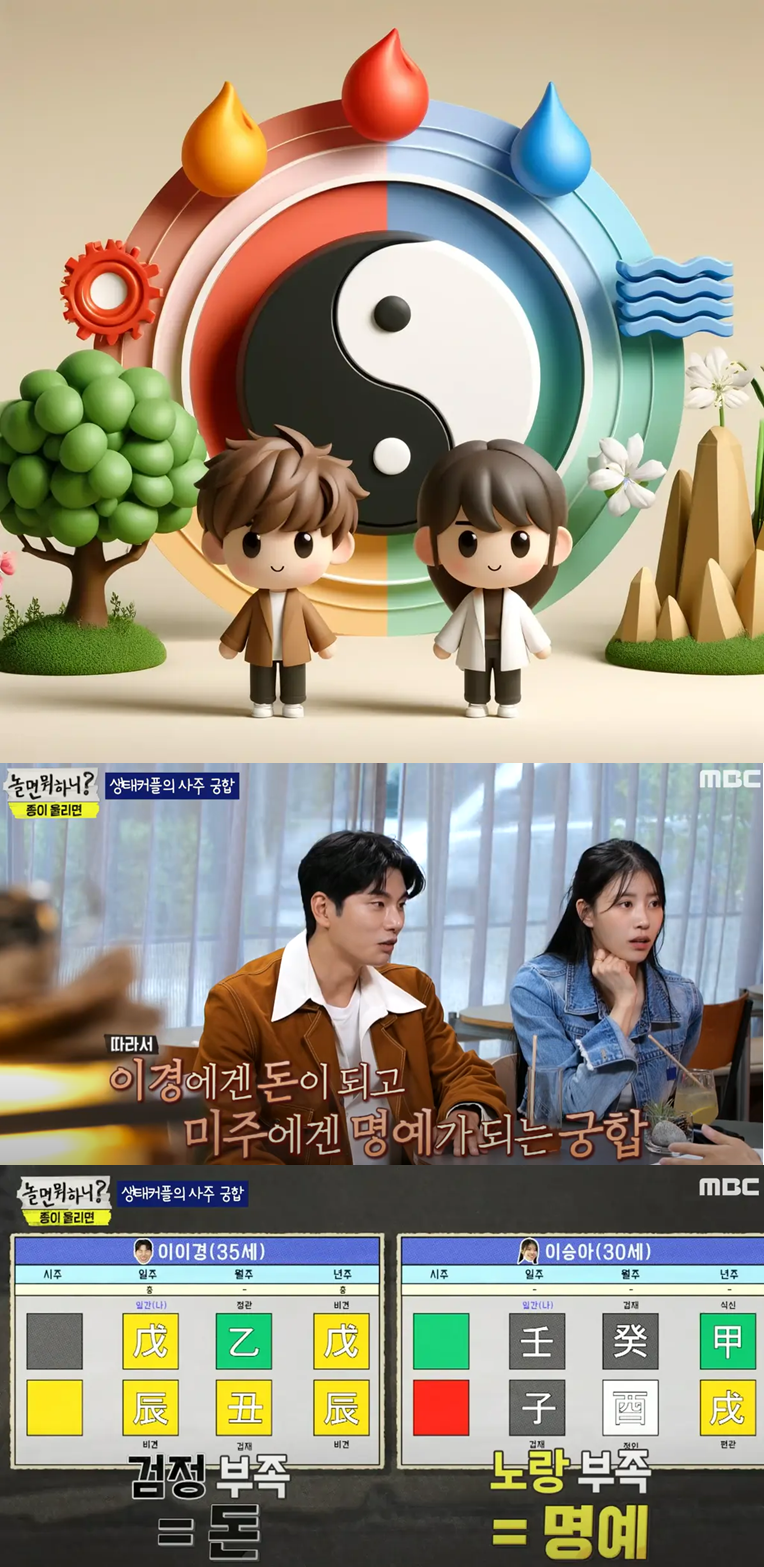Do Koreans use fortune-telling to predict their future?
In Korean variety shows and dramas, it's common to see scenes where the fate of a main character is predicted in a uniquely Korean way. On variety shows, fortunes are often used to check celebrity compatibility or predict success before new activities. In dramas, the main character might rely on fortune-telling to navigate challenging situations or make important decisions.

Credit: Netflix 'The Glory'
This tradition of fortune-telling isn’t just for entertainment—it's a part of everyday Korean culture. Many Koreans enjoy checking their New Year's fortunes to get a glimpse of what lies ahead and to plan accordingly. These readings provide a general sense of when good or bad energy might appear during the year, helping people prepare in advance. For those with significant life events on the horizon, like major exams or starting a new business, New Year's fortunes offer reassurance and motivation for new beginnings.
Why is Saju popular among Koreans?

The Tradition and Logic Behind the Four Pillars of Destiny
The Four Pillars of Destiny, also known as Saju, is a time-honored method used to interpret a person’s personality and fate based on their birth year, month, day, and hour. Each individual’s unique Four Pillars reveal insights into their tendencies, life challenges, health, finances, and more. Unlike shamanism, which relies on supernatural elements, the Four Pillars method is rooted in academic analysis and logical interpretation. This grounded approach is one reason why it remains so popular among Koreans today.
Easy Accessibility
Fortune-telling in Korea is incredibly accessible. Fortune-telling houses can be found everywhere, from bustling areas like Gangnam, Myeongdong, and Seongsu to smaller neighborhoods. Many of these places even offer phone consultations for added convenience. Recently, online fortune-telling has gained popularity, allowing people to check their fortunes anytime and anywhere. This mix of tradition and modern convenience makes fortune-telling an integral part of Korean culture.
Creatrip’s Exclusive Online Saju Service for Foreigners
Experience the magic of Saju without even coming to Korea! Creatrip has launched an easy and convenient online Saju service!
1. New Year’s Fortune
Get ready for 2025 with personalized predictions and success tips to start the year on a positive note!
2. Life Reading Saju
Discover insights into your personality, fate, and life’s highs and lows. Choose from:
- Type A: A basic overview of your life’s path.
- Type B: A detailed reading with in-depth life predictions.
3. Compatibility Readings
- Friends, Colleagues, or Partners: Find out how compatible you are, along with advice for building strong relationships.
- Idols: Ever wondered how compatible you are with your favorite K-pop idol? Now you can find out!
4. Korean Name Generator
Start fresh with a meaningful Korean name designed to match your Saju, bringing positive energy and a new beginning to your life!
Why Try Creatrip’s Online Saju Service?
1. Results Delivered Within 24 Hours
With Creatrip’s streamlined online system, your Saju reading is processed quickly and delivered within 24 hours.
2. Affordable Pricing (50–70% Cheaper Than Local Services)
Creatrip offers Saju readings starting at just 5,000 KRW, making it a budget-friendly way to explore your fortune.
3. Exclusive Translation Service
Your Saju reading is provided in the language of your choice, with complex Korean fortune-telling interpretations simplified and translated into multiple languages for your convenience.
Creatrip Fortune-Telling Services
1. New Year's Fortune

Prepare for 2025 with a personalized fortune-telling experience! This Korean-style New Year reading gives you insights into the year ahead, including the best times for major events, your personality strengths and weaknesses, and advice for success. Discover when good energy will flow and how to make the most of your peak periods. It’s a great way to plan and embrace the upcoming year with confidence and joy.
* Perfect for: Anyone with big plans, new beginnings, or simply curious about what 2025 holds!
2. Life Reading Saju

Unlike New Year fortune services that focus on the upcoming year, the Life Interpretation Horoscope provides a deeper understanding of your overall destiny and life path. It covers your personality, life’s highs and lows, and even things to avoid.
- Type A: A basic reading that explores your personality, fate, and strategies for handling challenges.
- Type B: A detailed analysis covering different stages of life—early, middle, and later years—as well as key areas like health, relationships, career, and wealth.
This horoscope helps you better understand yourself and prepare for what lies ahead in life.
* Perfect for: Anyone curious about their destiny or looking to plan and prepare for their future!
3. Compatibility Readings
a). Friends, colleagues, lovers

Find out how compatible you are with friends, colleagues, romantic partners, or even family members. If the compatibility isn’t ideal, you’ll get helpful tips on what to be mindful of. This reading offers insights into both your personality and the other person’s, highlighting strengths, weaknesses, and advice for building and maintaining a strong relationship. It's a great way to improve connections and keep them thriving!
* Perfect for: Those curious about new relationships, looking to strengthen existing ones, or preparing for marriage!
b). Idols

Ever wondered if you’re compatible with your favorite idol? This reading lets you discover how well your personality aligns with theirs. Check if their real temperament and personality, beyond what you see on screen, match with yours through a fortune-telling session!
* Perfect for: Fans curious about their compatibility with idols.
4. Korean Name Generator

Korean names carry meaningful symbolism, and some are designed to bring positive energy based on the Four Pillars of Destiny. If you don’t have a Korean name yet, you can receive one tailored to your unique Four Pillars. Already have a name? We can refine it into a more fitting Korean name through detailed analysis. Each name is crafted to align with the early, middle, and later stages of life, helping you attract good fortune. If life hasn’t been going your way, consider starting fresh with a Korean name that brings positive energy!
* Perfect for: Naming a child in Korean, giving a meaningful name to a newborn, or finding a special name for a friend or loved one.
If you have any questions or concerns, please leave a comment below or send us an email at help@creatrip.com! You can follow us on Instagram, TikTok, Twitter, and Facebook to stay updated on all things Korea!

